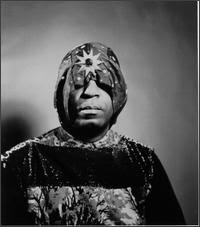

Skateboarding has been a central part of my life since I was 13 years old when I went with my parents to Sears and bought a “Fingerprint” deck fitted with day-glo wheels on heavy, stiff steel axles. It was an ungainly board, cheaply made to stock the shelves of mainstream retailers hoping to capitalize on the resurgent popularity of skateboarding in the mid-80s. Since my parents had fronted me the money for the deck, I wasn’t allowed to ride it till I paid them back—a sort of coat closet lay-away system intended to instill a capacity to suppress desire until it could be unleashed with a debt paid in full. Unable to resist the call of the streets however, I would sneak the board out of the closet and practice pushing on it in the driveway any time my parents weren’t around, careful to wipe down the wheels, like a burglar removing fingerprints, before nervously putting it back. After making the last payment on my parents’ convenient installment plan, I was out pushing, turning, and carving every day on the nearest side-street. In the evenings I began to fill my sketchbooks with fanciful images of skaters jousting one another with bats and chains amid industrial desolation, suitably adorned in apocalyptic fashion replete with mohawks, eye-liner, and spiked shoulder-pads. Skateboarding overtook my imagination and had become a fantastic body practice, transforming my sense of self through risk and speed as I simultaneously transformed the ordinary streets of a New Jersey town into zones of excitement, pleasure and danger. I felt skateboarding literally changing the ground beneath me, and discovered this otherworldly sensation described by the thrash band, Suicidal Tendencies, in their 1987 song, “Possessed to Skate”: Doesn't understand why you'd wanna walk, Ain't got time to sit and talk, Used to be just like you and me, Now he's an outcast of society, Beware! He's possessed to skate!
At the end of my first summer with a skateboard, my family and I traveled to Florida to visit my grandmother. One afternoon, driving to the supermarket with my grandmother, I spotted a battered, garishly spray-painted old school bus parked at the far edge of the parking lot, a disconcerting feature amid the careful landscaping and groomed citizens of Cocoa Beach. The bus, I realized, was the local skate shop. Thrilled and frightened at the same time—the weird bus seemed too uncannily familiar from my apocalyptic skate drawings—I climbed the steps slowly to see the institutional interior of the school bus utterly transformed into a space as much a shrine to skateboarding as a tentative commercial enterprise. Skateboard parts were arranged religiously on long, narrow wooden tables. Decks with strange and macabre graphics rested against the windows. For the first time I saw that boards could be assembled and repaired by the rider, rather than bought complete right off assembly lines. An older man, with a bandana tied wide and low across his forehead, dark sunglasses on and tattoos blacking his arms, leaned towards me from a lawn chair set up in the dim rear of the bus, just in front of the emergency exit. “Hey, yo, you need something?” Hesitantly, I tried to forestall any suspicion about my awed, uncertain attitude by explaining I’d only been skating a little while and that I was just here visiting my grandmother. In short, I wasn’t a real skater and I’d ended up inside this apparition of skateboard occult by accident. “Cool. Did you bring your stick?” the man asked warmly and I stared back, completely confused. Seeing my incomprehension, the man nearly howled, “Your board, man, your board!”
“Yeah, yeah, I did!” I blurted out immediately, my voice tripping over itself, relieved and happy to suddenly be allowed, through a fragment of slang, into this skater’s world. “Well, you should grab a mag, something to do when it rains, you know?” He gestured towards several small stacks of magazines. I picked up one that proclaimed “SKATEboarding” repeatedly down its cover, supplemented by “Transworld” in smaller type. “Yeah, that’s a good one, man. That’ll get you stoked to ride.” I descended from the bus out into the blistering asphalt of the parking lot, holding the August, 1987 issue of Transworld Skateboarding tightly. I felt like I’d finally made contact with an elusive tribe, a tribe with which I believed I shared some deep kinesthetic kinship.
Twenty-three years later, that copy of Transworld rests next to me as I write, its pages worn, its cover carefully taped back together. The cover is mostly taken up by the title, creating a powerful graphic pattern, followed by a small text block detailing the contents. Among the five feature articles, one resonates with meaning I never imagined as I stood outside that battered bus in a Florida parking lot. “Japan.”





